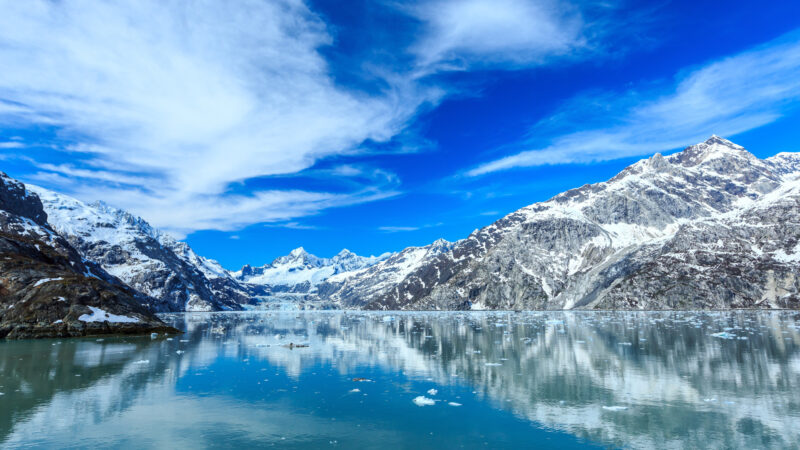Table of Contents Show
Alaska has the nickname the Last Frontier. When you see the immense, fascinating, and rugged landscapes, you can easily see why Alaska has so many national parks.
It’s a land of beauty, but it’s anything but gentle. The National Park Service protects 23 national park units within the state’s borders.
If you want to attempt to visit all 63 units with the national park designation, you must head to Alaska.
Today, we’re sharing everything you need to know about Alaska national parks. Let’s get started.
How Many National Park Designations Are in Alaska?
The National Park System has 19 designations, and Alaska is unique in that many parklands have more than one designation.
For example, Denali National Park and Preserve has two designations in its name and areas assigned as Wilderness Areas within the park.
Alaska has national parks, monuments, preserves, historic sites, historical parks, rivers, trails, and affiliated areas.
There’s so much to see, do, and experience in Alaska in these wilderness areas.
What’s the Most Visited National Park in Alaska?
The most visited national park in Alaska is Glacier Bay National Park. While many NPS units attract millions of visitors yearly, you won’t find those numbers in Alaska.
It’s simply not nearly as easy to access as the other parks. Glacier Bay typically sees around 670,000 visitors during a typical year.
However, the past few years of travel restrictions have drastically reduced the visitor numbers here.
While the park was trending upwards in attendance, it peaked in 2019 at 672,087 and dropped to 5,748 in 2020. But these numbers continue to bounce back.
Learn More: If you want to know the most popular national parks, check out Ranked: These Are the Best National Parks in the USA
What Does the Designation ‘National Park and Preserve’ Mean?
Many of the national parks in Alaska have multiple designations. As a result, it’s not uncommon to see “national park and preserve” as the name of a unit.
The titles simply determine regulations of certain activities like hunting, snowmobiling, and other popular outdoor activities in the area.
To learn more about the various types of NPS designations, visit the systems designations page managed by the NPS.
A Guide to Alaska National Parks and Preserves
With so much to see and do in Alaska, it’s practically impossible to see it all in a lifetime.
However, it doesn’t mean you shouldn’t give it a shot. Let’s look at the eight NPS units that make up the Alaska national parks.
Denali National Park and Preserve
Denali National Park and Preserve became a national park in 1917 and was the 12th national park. It welcomes approximately 600,000 visitors a year.
The park only has a single road, Denali Park Road, which stretches 92 miles long. However, only the first 15 miles of the road are paved. Once you reach the end of the paved road, you’ll need to use the park’s bus system to experience the rest.
Despite being more than 6 million acres, it has very few hiking trails. However, you can find a couple around the visitor centers.
If you want to visit Denali, you’ll want to visit from mid-May through mid-September. When visiting after this time, the weather becomes incredibly unpredictable.
However, it can snow during any month of the year, and road conditions can unexpectedly change. But visiting here allows you to see the tallest mountain in North America, Denali.
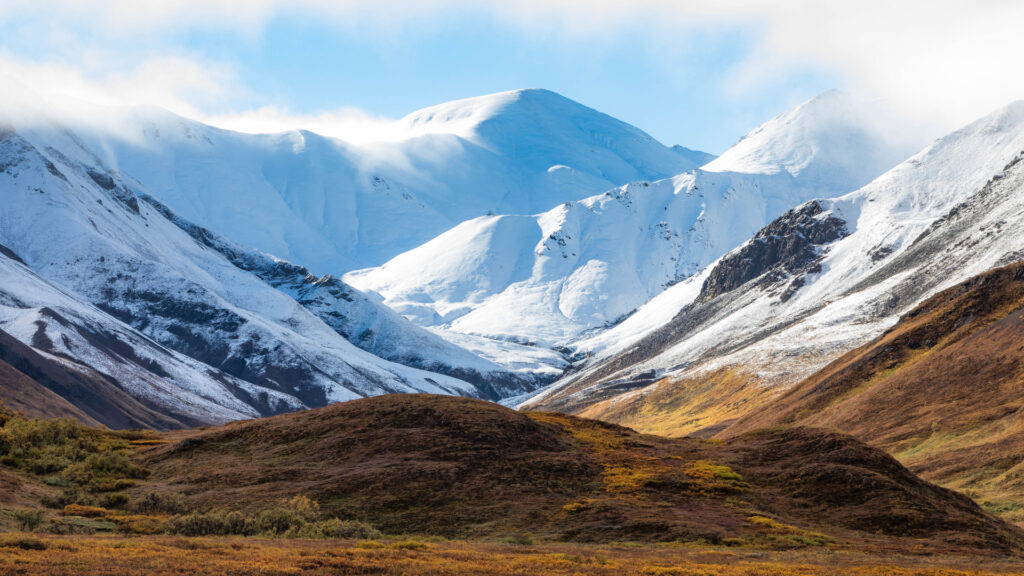
Gates of the Arctic National Park and Preserve
Gates of the Arctic National Park and Preserve has more than 8 million acres of arctic ecosystems in Alaska’s central Brooks Range. This remote and vast landscape is no joke.
Visitors to the park must be self-sufficient, flexible, and incredibly tough. One of the only guarantees is that you’ll not have cell phone service, amenities, or services while here.
Accessing the park requires traveling by boat or plane. However, planes can often not fly during inclement weather, so you better come with plenty of supplies.
If you want to test your survival skills or live out your Bear Grylls dream, this park is for you.
Keep in Mind: With winter coming up, you may be looking for somewhere warm to visit! These are some of the Coldest States You Won’t Want to Visit in the Winter.
Glacier Bay National Park and Preserve
Glacier Bay National Park and Preserve is Alaska’s most popular national park.
This is mainly due to the large number of cruise ships that stop in the area from late May until early September. The busiest month is July, but don’t expect summer weather.
The average temperatures here during summer lie between 50 to 60 degrees Fahrenheit. This area frequently experiences large amounts of rain, so plan accordingly. And bring your waterproof gear.
As no roads lead to Glacier Bay, you’ll need to take some sort of charter service. Many guests visit the park as passengers on one of the many cruise ships that pass through the area.
Once you get to the park, you can hike the three wet and muddy trails, so bring rubber boots.
You can also go camping, kayaking, river rafting, and fishing. Just make sure you have all the necessary licenses and permits.
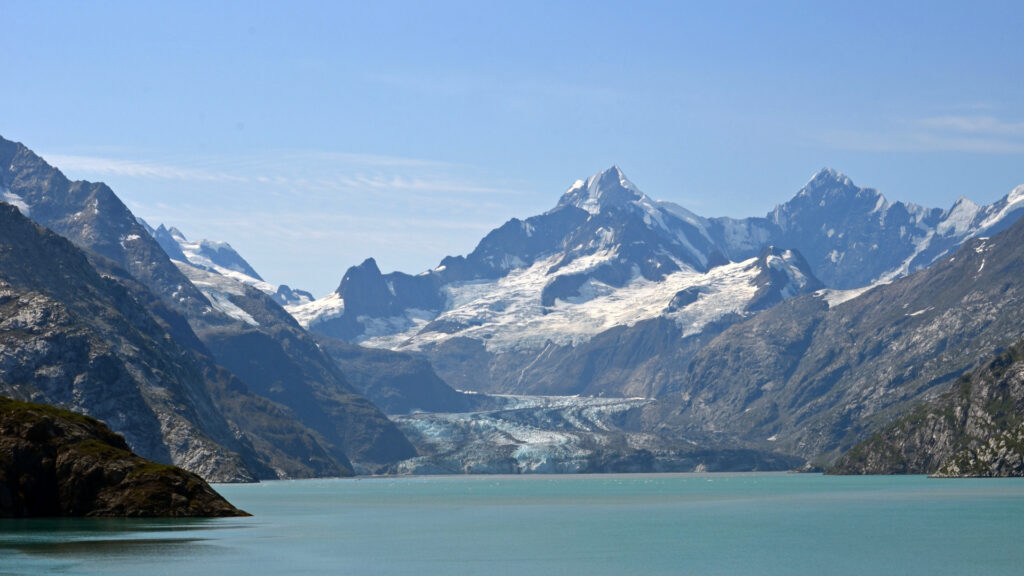
Katmai National Park and Preserve
Katmai National Park and Preserve became a national park in 1980 to help protect, study, and interpret the volcanic activity in the area.
When you visit this park, you’ll explore the incredibly vast wilderness and have the opportunity to watch brown bears catch salmon or trout for a meal.
This is another remote national park with few services you can’t access by car. So come prepared with everything you’ll need during your time in the park.
Kenai Fjords National Park
Kenai Fjords National Park became a park in 1980. It typically sees 350,000 guests a year. You can’t access the park in the winter, but you can visit June through August for the best experience.
This is another remote, rugged, and unpredictable national park. You must prepare for encounters with wildlife, falling ice, earthquakes, and avalanches.
When inside the park, you’ll find plenty of activities. You can enjoy a fishing tour, a flight over the park, and even mountaineering adventures. Despite the rugged and strenuous conditions, the park offers something for every interest and ability.
Pack plenty of emergency supplies for a hike or a scenic drive. Anything can happen, and you need to be prepared.
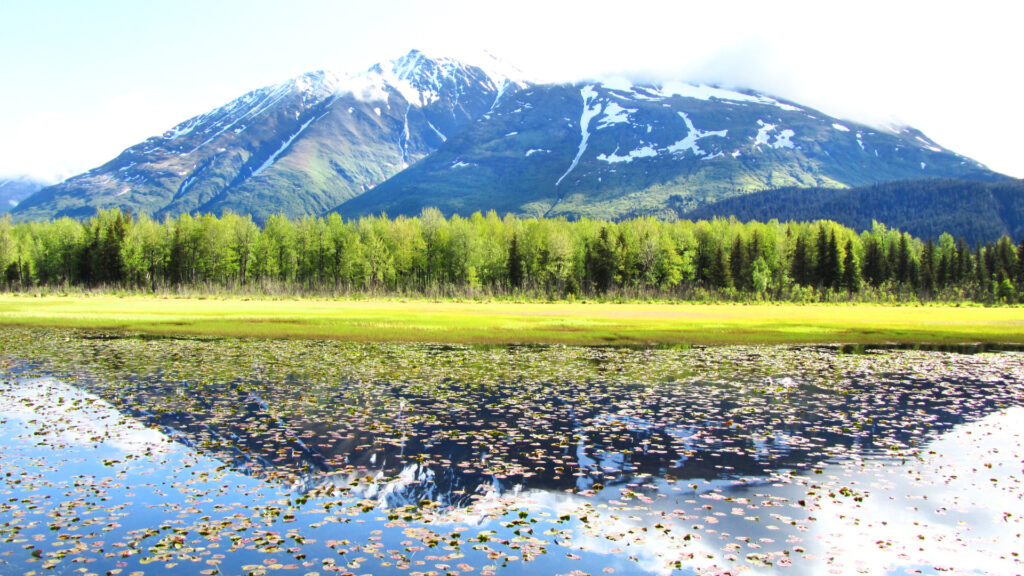
Kobuk Valley National Park
This is another beautiful Alaska national park that received its designation in 1980. In a typical year, this hard-to-reach national park welcomes 15,000 visitors.
This remote and wild national park remains open all year and has plenty of opportunities for backpacking, boating, and flight-seeing.
You can only access this park via plane, so plan your travels in advance and build in a couple of days to protect yourself from weather delays.
You’ll want to grab supplies in Kotzebue before getting dropped off at the park. Because it has no roads or established facilities, you can create your adventures on the 1.7 million acres.
Keep in Mind: What Is the Hardest National Park to Visit? Click the link to find out!
Lake Clark National Park and Preserve
Lake Clark National Park and Preserve has 4 million undeveloped acres in southwest Alaska and welcomes 17,000 guests annually. It is perhaps one of the most remote national parks and received its designation on Dec. 2, 1980.
According to the National Park Service, it supports “an ongoing tradition of subsistence culture in a volcanic and partly glaciated landscape containing habitat for wilderness-dependent species of fish and wildlife.”
You won’t struggle to find adventure, solitude, or recreation at this national park. The massive 55 miles of Lake Clark have great kayaking, fishing, and photography opportunities.
You’ll find iridescent and turquoise lakes that reflect the mountainous landscapes. You’ll feel like you’re experiencing a National Geographic documentary before your eyes.
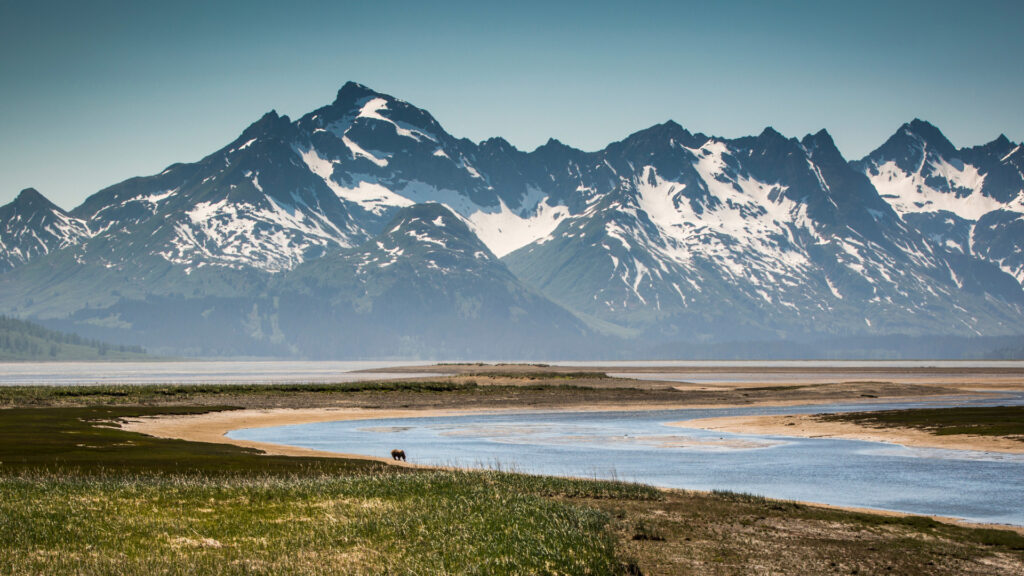
Wrangell – St Elias National Park and Preserve
Wrangell – St Elias National Park and Preserve is massive! At 13.2 million acres, it’s America’s largest national park.
It’s the size of Yellowstone, Yosemite, and the country of Switzerland combined. Despite its millions of acres, park attendance is typically around 74,000 visitors.
The impressive mountains remain covered in snow year-round, and you’ll find icefields and glaciers throughout the park.
Here you can taste the Alaskan frontier, experience historic mining sites, and enjoy adventurous activities like hiking, floating in the rivers, and skiing on the glaciers.
Take to the skies, enjoy the view over these impressive landscapes, and watch the various geological formations come to life.
Pro Tip: To learn more about this giant national park, read Why You Need to Visit the Largest National Park in the US at Least Once!
Plan Your Trip to an Alaska National Park Today
Alaska national parks may not be easy to get to, but you’ll have no trouble finding adventures once you do.
However, you can’t just hop on a plane, head to Alaska without a plan, and expect a successful trip. Spend a few months planning your trip.
And remember that excursions and other activities requiring reservations sell out. So make sure you plan far enough in advance that you don’t run into any issues making reservations. And be sure to pick up a National Park Pass before you go!
What are you waiting for? Get out and start exploring the Last Frontier.




